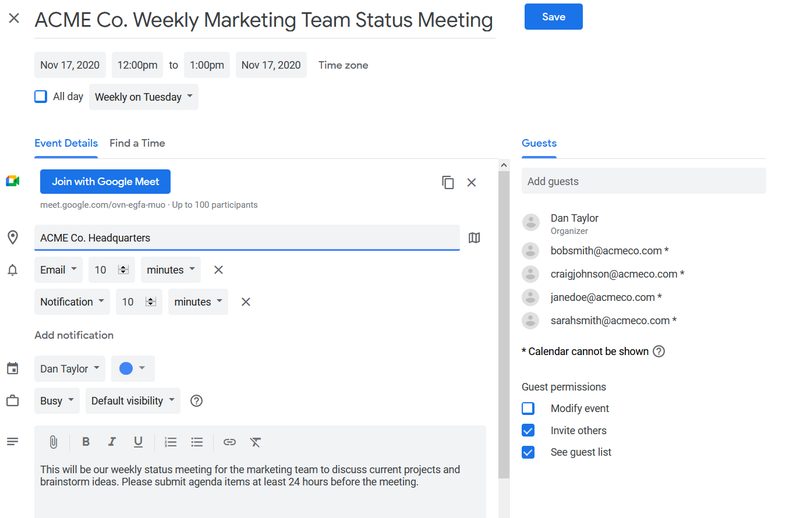

Since the GA release, Google has added a new feature that allows customers to trigger any service, running anywhere: on-prem, on Google Cloud or any third-party datacenter. Google made Cloud Scheduler generally available (GA) during its Next event two months ago in San Francisco, and after several months of its beta launch, as reported on earlier by InfoQ. Please do reach out if you have any questions.In a recent blog, Google announced that customers can now securely invoke HTTP targets on a schedule using Cloud Scheduler – a fully managed cron job service that allows any application to invoke batch, big data, and cloud infrastructure operations.
#Google scheduler code#
The code is self-explanatory and is commented. You can copy and paste the contents of these 2 files from the gist below. Since this is a simple function, there are not many additional libraries that we need to install. By default, the environment comes pre-installed with a bunch of libraries. This is where we declare the libraries required to be installed in the cloud function environment to execute our function.
#Google scheduler update#
This is how the environment knows which function to call to handle a Pub/Sub event.įor the purposes of this article, we will leave the name as is and just update the contents. You can obviously change the main function name, but make sure to update it accordingly in the Entry point function name tab. This is the signature for the main function that gets triggered by a Pub/Sub event. Since we have selected the trigger as Pub/Sub, there should be a single function in this file with the signature hello_pubsub(event, context), populated by default.

This file is where all the function code resides and is executed when the trigger event happens. (source: author)Īs you can see, there are 2 files displayed below the Source Code Inline Editor tab. it might not be as sexy as the others, but in my opinion, it's the reliable backbone of everything on the GCP! It’s basically a location to hold any kind of data. Cloud Storage : Well…not much to say here really.In this case, we use it to generate a Pub/Sub event for a topic, every 15 minutes. It can basically schedule anything really. Cloud Scheduler : This is a fully managed enterprise-grade cron job scheduler from GCP.In our case, the Cloud Scheduler will produce a Pub/Sub event which will then trigger our Cloud Function consumer, who is listening for a particular topic from the Pub/Sub service. It enables a system design where there are event producers and consumers, also known as publishers and subscribers. Cloud Pub/Sub : This is an event-driven real-time messaging service that allows us to create systems that communicate asynchronously.

It’s a simple task that can be easily adapted to your use case. When it executes, it will run our code that will write the word “money” to a text file and save it in the Google Cloud Storage bucket. This service will be triggered every 15min. Cloud Function: Oh Yes, this serverless compute service will host and execute all our code.We are going to use 4 services from the Google Cloud Platform (GCP) to do this.


 0 kommentar(er)
0 kommentar(er)
